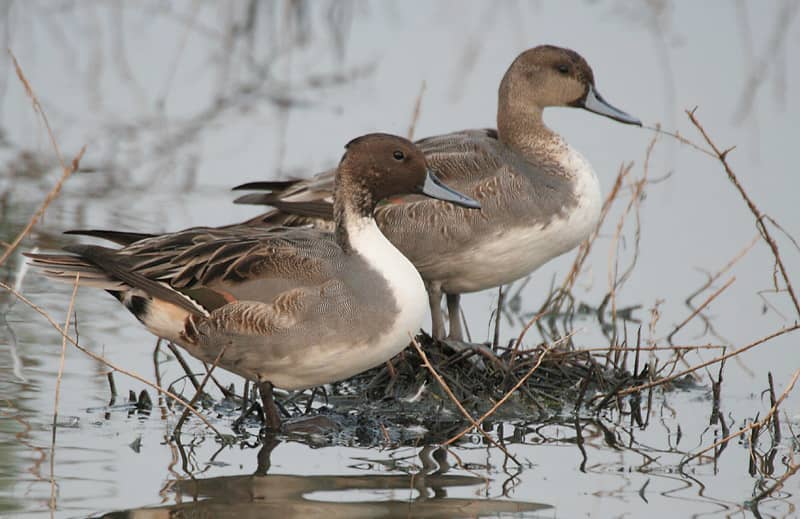Could California’s Drought Endanger Pacific Flyway Ducks?
OutdoorHub Reporters 08.05.14

Duck numbers are up across the country and available habitat seems to be holding steady, but could a devastating California drought endanger birds along the Pacific Flyway? Just last week the US Fish and Wildlife Service (USFWS) proposed a liberal 107-day season in the Pacific Flyway, yet the region is being baked by California’s ongoing drought. Water shortages have closed many acres of available habitat in both wildlife refuges and in the crop fields where the ducks rest during winter. This not only puts pressure on the birds to find food and space, but also introduces the risk of disease in these crowded populations.
According to the California Department of Fish and Wildlife (DFW), drought conditions have increased the chances for an outbreak of Clostridum botulinum, a bacterium that causes avian botulism.
Outbreaks generally occur in warm temperatures where the bacteria grows rapidly on rotting vegetation, which the ducks then consume. Wildlife officials warn that while the disease generally is most noticeable in the state’s wetlands, ducks in local ponds and parks can also be subject to an outbreak. Residents who see any ducks with limp wings, muscle spasms, or using their wings to swim should avoid the birds and quickly contact the DFW. Removal of dead birds will help in reducing mortality rates, which can reach as high as 40,000 in localized events.
The Sacramento Bee reported that 1,700 waterfowl have already been found dead at the Tule Lake National Wildlife Refuge. Officials are not sure how the problems caused by the drought will effect this year’s fall flight, which is expected to be the largest migration in 60 years.
“We’ve got this perfect storm, if you will. And it’s not going to be pretty,” said Mark Biddlecomb, regional director for Ducks Unlimited. “I think we’re looking at the probability of a food shortage in addition to a disease outbreak. If they don’t go back in excellent condition, they’re not going to be breeding like they would normally, and that will affect the entire flyway from the boreal forests of Canada all the way down to Mexico, frankly.”
Many wildlife refuges will be opening waterfowl rehabilitation programs as well as incinerating any carcasses found, but that will only help mitigate the habitat shortage that millions of waterfowl will find in California. In addition, the DFW is caught in the middle of a delicate balancing act between allocating water to wildlife refuges and making sure that migrating salmon also get what they need to survive. Sixty percent of the state is still locked in the grip of what officials call exceptional drought conditions. On Saturday, California Governor Jerry Brown announced a state of emergency due to the effects of wildfires in the northern parts of the state, which have burned thousands of acres and left many residents homeless.

